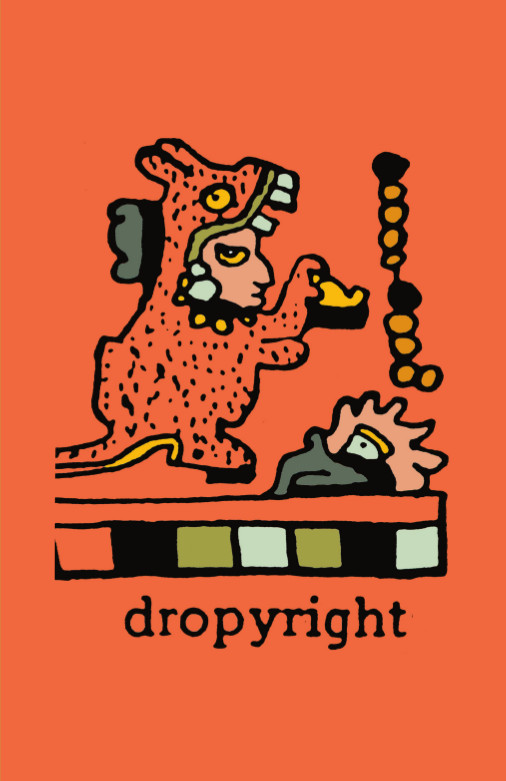Michael Mandiberg (ed.): The Social Media Reader (2012)
Filed under book | Tags: · blogging, copyright, free culture, hacking, indymedia, internet, labour, memes, open source, peer production, phreaking, social media, social networks, wikipedia, youtube

With the rise of web 2.0 and social media platforms taking over vast tracts of territory on the internet, the media landscape has shifted drastically in the past 20 years, transforming previously stable relationships between media creators and consumers. The Social Media Reader is the first collection to address the collective transformation with pieces on social media, peer production, copyright politics, and other aspects of contemporary internet culture from all the major thinkers in the field.
Culling a broad range and incorporating different styles of scholarship from foundational pieces and published articles to unpublished pieces, journalistic accounts, personal narratives from blogs, and whitepapers, The Social Media Reader promises to be an essential text, with contributions from Lawrence Lessig, Henry Jenkins, Clay Shirky, Tim O’Reilly, Chris Anderson, Yochai Benkler, danah boyd, and Fred von Loehmann, to name a few. It covers a wide-ranging topical terrain, much like the internet itself, with particular emphasis on collaboration and sharing, the politics of social media and social networking, Free Culture and copyright politics, and labor and ownership. Theorizing new models of collaboration, identity, commerce, copyright, ownership, and labor, these essays outline possibilities for cultural democracy that arise when the formerly passive audience becomes active cultural creators, while warning of the dystopian potential of new forms of surveillance and control.
Publisher NYU Press, 2012
Creative Commons Attribution NonCommercial ShareAlike (CC BY-NC-SA) license
ISBN 0814763022, 9780814763025
289 pages
The Plagiarist Codex: An Old Maya Information Hieroglyph (1988)
Filed under pamphlet | Tags: · copyright, manifesto, plagiarism

“We have discovered from the barren wastelands of Central America an essential document in the early history of copyist strategies. Thought to have been created toward the end of the classical period of Mayan civilization, 998 A.D., the codex has been translated by a brilliant group of London plagiarists & the esteemed Amendant Hardiker from Wisconsin. Originally published by Plagerizedæ (Sic) Books in 1988 on the occasion of the Festival of Plagiarism held in London, San Francisco & Madison, WI. It is now distributed by Xexoxial Endarchy.” (mIEKAL aND, 1998)
“Something of a manifesto for plagiarism, Wisconsin style. Speaks to the enrichment of cultural dialogue through the reuse of old ideas in new combinations. An extension of collage theory if you will, in that not only are images and texts conflumed in a single multitrack, they are enriched by their new context and the new way they are perceived. The booklet consists of a series of ideograms put next to series of words, parallel text like the Rosetta Stone, serving to transliterate the sense of the pictures. Some, it would seem, are genuinely Maya, others are not. The coinages are exquisite: a useful one is “imagiarism”. Speaks of a communal body of ideas to which everyone has unabashed and inalienable rights. How can you steal whatʼs already yours?” (from the PhotoStatic Magazine review, 1988)
Publisher Plagerizedæ (Sic) Books, Madison, Wisconsin, 1988
Distributed by Xexoxial Editions
ISBN 1440442851
50 pages
via Xerox Sutra Editions
Jeffrey Saletnik, Robin Schuldenfrei (eds.): Bauhaus Construct: Fashioning Identity, Discourse and Modernism (2009)
Filed under book | Tags: · architecture, art, bauhaus, copyright, critical theory, design, painting, photography

Reconsidering the status and meaning of Bauhaus objects in relation to the multiple re-tellings of the school’s history, this volume positions art objects of the Bauhaus within the theoretical, artistic, historical, and cultural concerns in which they were produced and received.
Contributions from leading scholars writing in the field today – including Frederic J. Schwartz, Magdalena Droste, and Alina Payne – offer an entirely new treatment of the Bauhaus. Issues such as art and design pedagogy, the practice of photography, copyright law, and critical theory are discussed. Through a strong thematic structure, new archival research and innovative methodologies, the questions and subsequent conclusions presented here re-examine the history of the Bauhaus and its continuing legacy. Essential reading for anyone studying the Bauhaus, modern art and design.
Publisher Routledge, an imprint of Taylor & Francis, 2009
ISBN 0415778360, 9780415778367
304 pages

